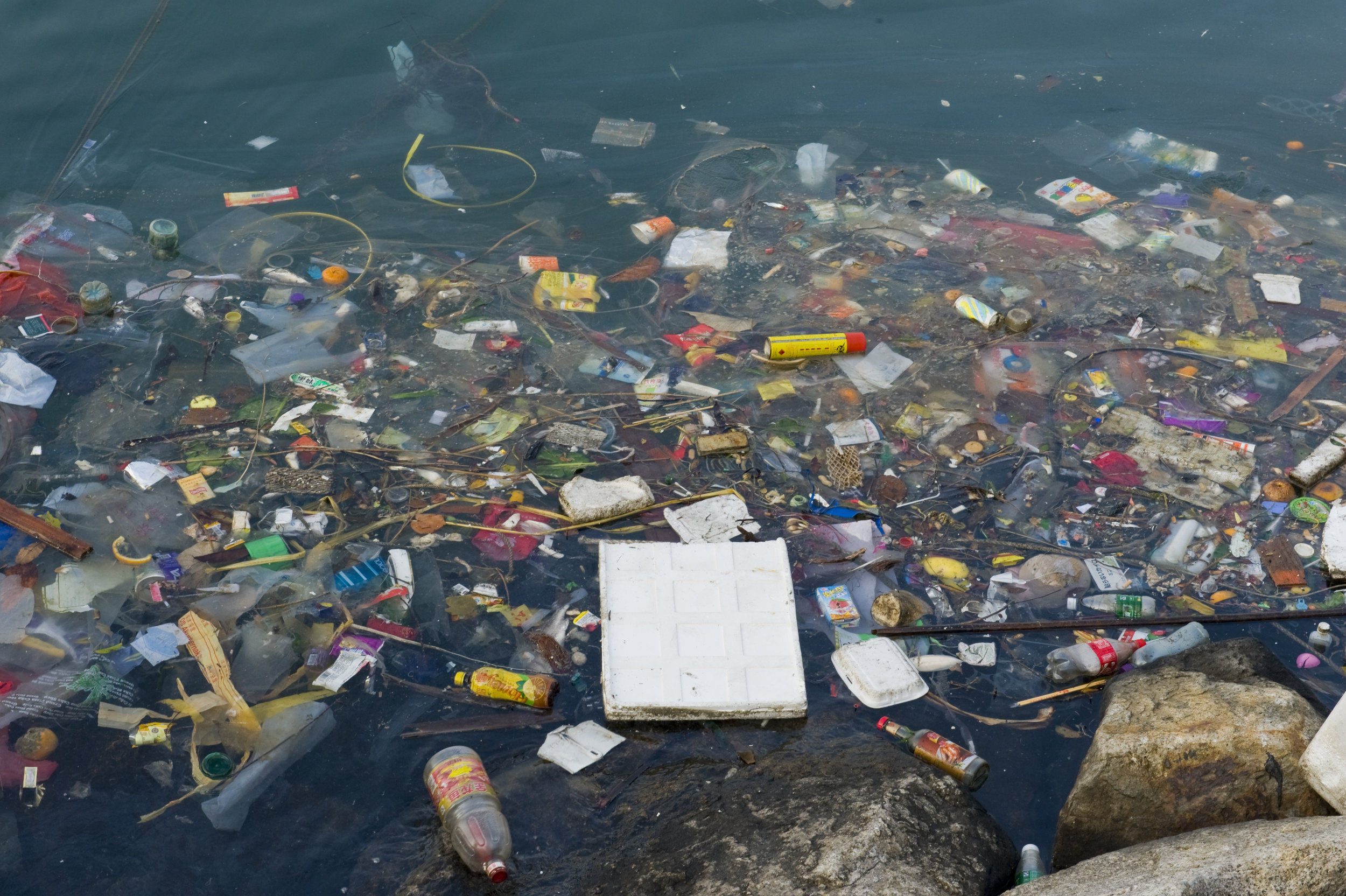What’s the big deal with ocean plastics, anyway?
Oceans and ocean life are under siege from plastic waste.
Ocean plastic is by many accounts one of the most significant environmental challenges facing the world today. Plastics, much of it from consumer packaging, degrades into tiny particles that harm and kill marine animals—and at this level, plastics are virtually impossible to clean up.
The equivalent of a full garbage truck of plastic is dumped in the ocean every minute.
Scientists found nearly 18 tons of plastic on one of the world’s most remote islands, an uninhabited coral atoll in the South Pacific.
Just this April, a sperm whale was found with 64 pounds of plastic in its stomach, likely its cause of death.
Without action, the ocean will likely contain more plastic than fish by 2050.
We’re working to stem the flow at its source: the endless tsunami of single-use plastics and plastic packaging from global corporations.
These corporations—the ones putting single use plastics and plastic packaging into commerce without regard or responsibility for its recyclability or recycling systems—MUST be part of the solution. And shareholders are one of the strongest, most powerful forces for creating lasting change in these corporations’ behavior.
Our Goals
First, make all plastic packaging recyclable. Second, companies must help finance improved recycling systems so materials actually get recycled. Third, use fewer single-use plastics in commerce overall.
Recyclability. An astounding amount of plastic is non-recyclable, period. The increasingly ubiquitous flexible pouches, for instance, that package products ranging from baby food and fruit juices to liquid laundry soap, cannot be recycled. It is essential for companies to design packaging so that it can be recycled.
Recycle. Recyclability does little good if it doesn’t actually get recycled. Only about 14% of plastic packaging is recycled in the U.S. The recycling industry is fragile and runs on margins so low that a drop in the price of post-consumer commodities can be fatal. Right now is an especially challenging time, as China has shut down U.S. exports of plastic waste. U.S. recyclers relied on China to generate much of their profit because much of the material sent for recycling was poorly processed and contaminated. While this is painful in the short run, it does create an incentive to develop permanent domestic recycling markets in the U.S.
A major part of the financial challenge for recyclers is that U.S. recycling systems are mostly funded by taxpayers. In many other countries, end user brands—like the companies we engage—pay fees to help cover the cost of collection and recycling. It’s the law and is known as producer responsibility. Producer responsibility generally leads to higher recycling rates and more stable economics for recyclers. Producer responsibility fees can help develop a desperately needed domestic plastic processing market that will convert plastic from one-way trip to the landfill to a circular, regenerative path.
Reduce. Finally, we need to reduce plastic use overall. Plastic production is projected to triple by 2050. Up to 30% of plastic not only does not get recycled, it escapes capture in landfills and instead gets swept onto land and waterways. Our inability to recycle or safely contain significant amounts of plastic packaging in landfills argues that companies need to carefully assess continued growth of plastic use, especially for single use applications. If governments and industry cannot manage to recycle even one-fifth of plastic packaging, it is unclear how they can make sufficient progress to keep plastic out of rivers and oceans if production continues on a steep upward path.
Our Strategy
Companies that place plastic packaging on the market need to demonstrate awareness of these challenges and prioritize actions to resolve them. We directly engage with companies, including via shareholder resolutions, pressing them to:
Transition their plastic packaging to be recyclable, reusable, or compostable to the fullest extent possible
Disclose their annual plastic packaging use and set plastic use reduction goal
Develop alternatives to plastic for packaging, especially for single use applications
Play a significant role in funding and facilitating collection and recycling of packaging in markets where they operate (i.e. producer responsibility)
Support public policy measures on reducing plastic waste and broadening producer responsibility
Accelerate research on the potential for technology and innovation to provide additional solutions

